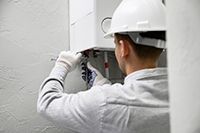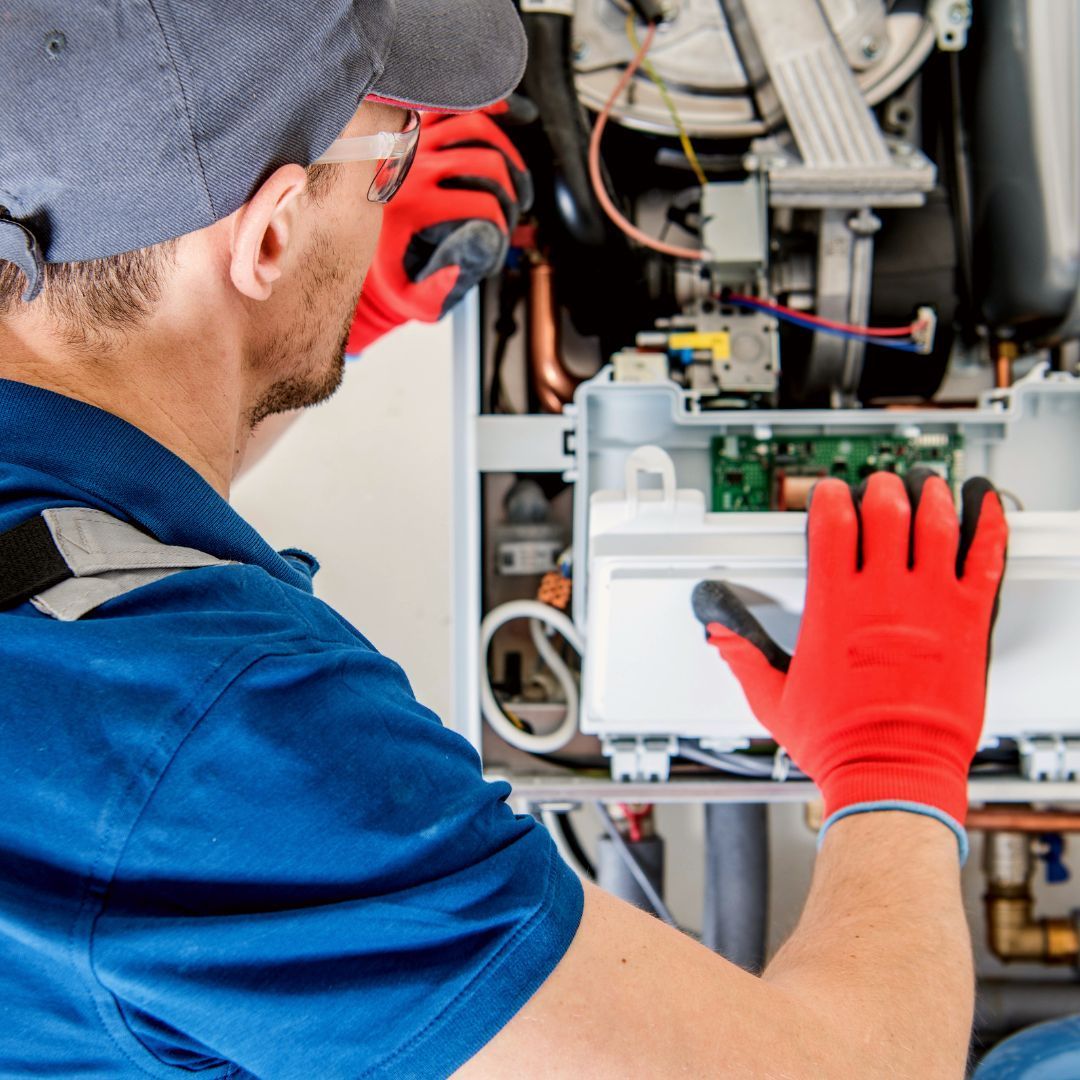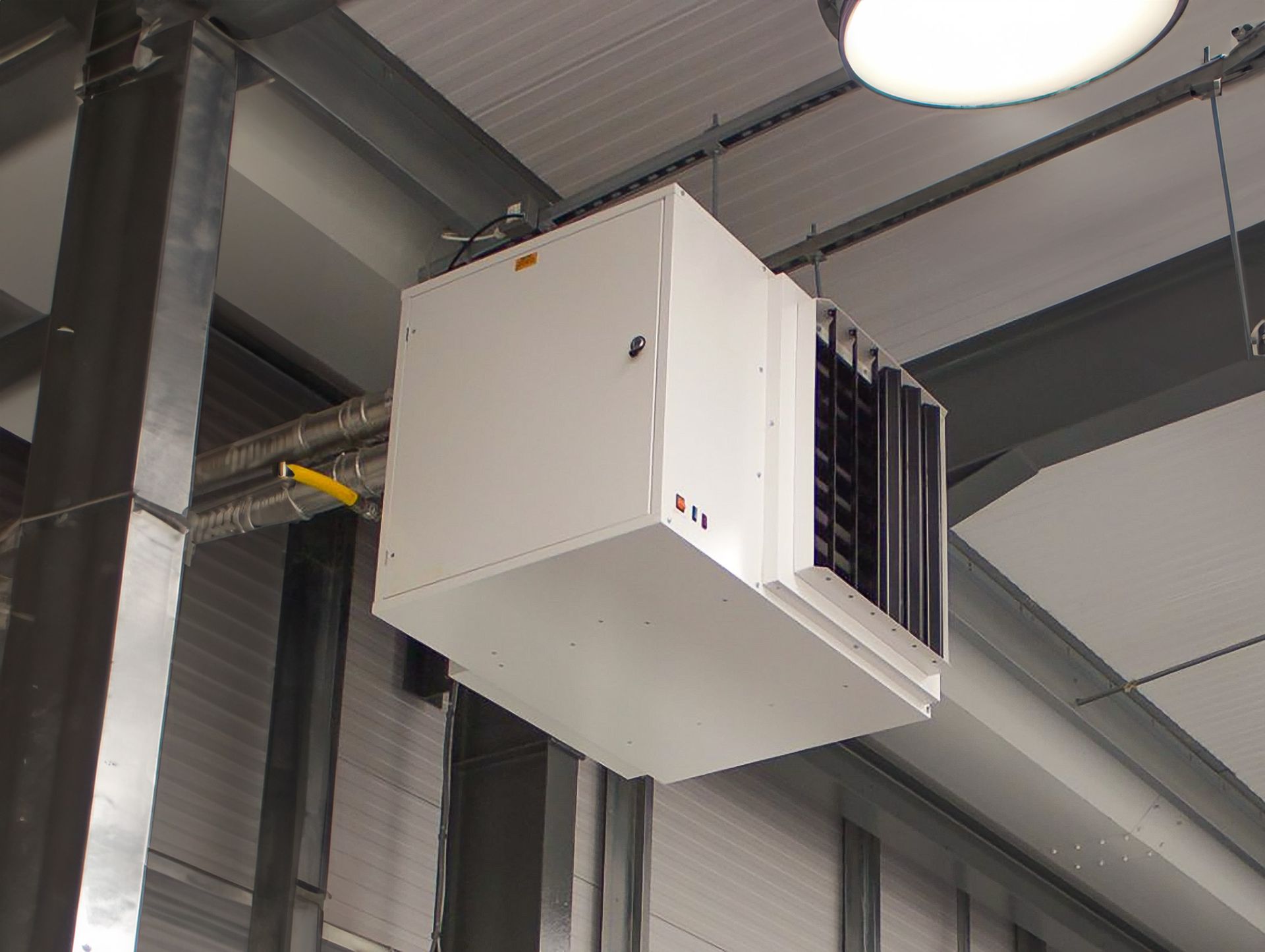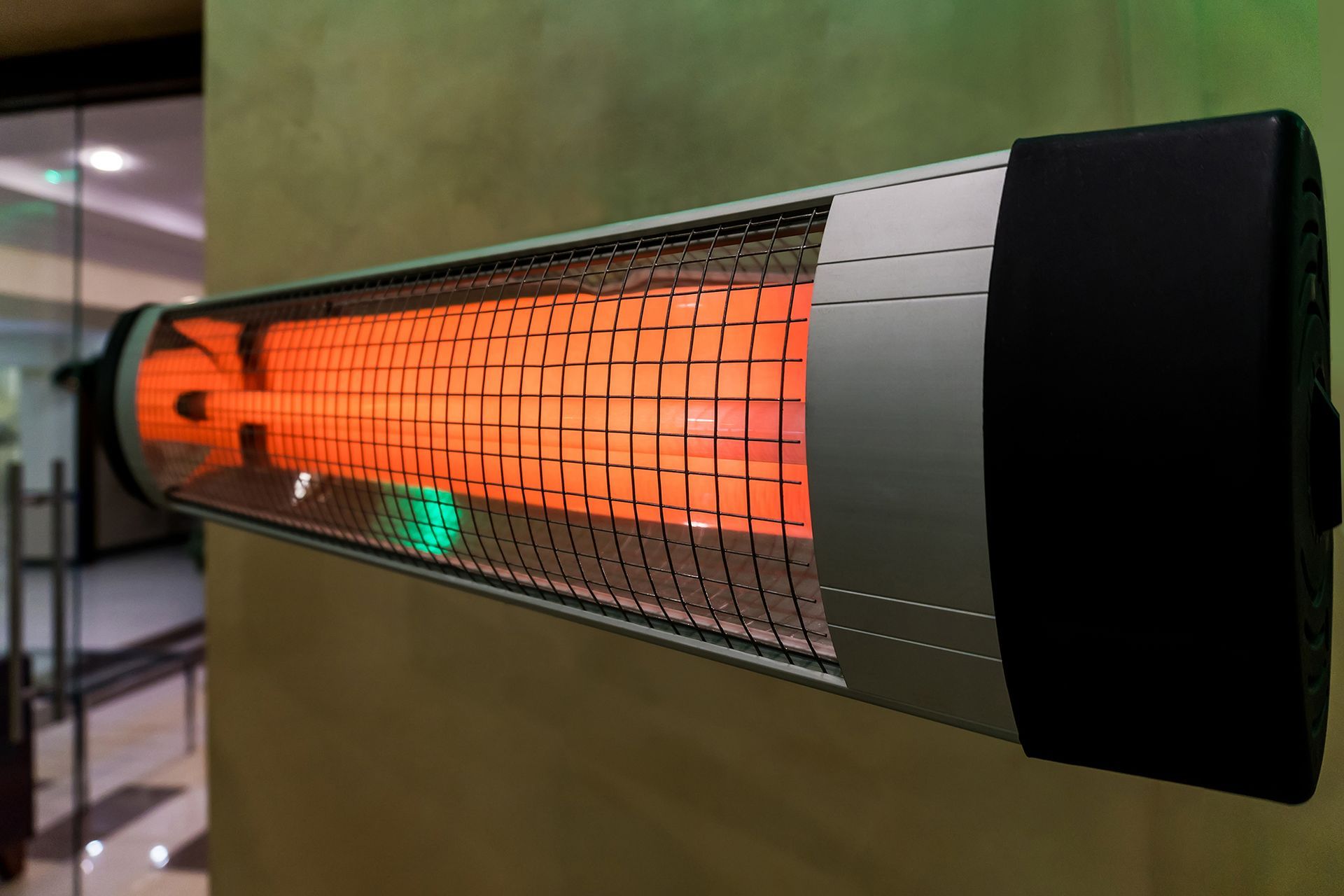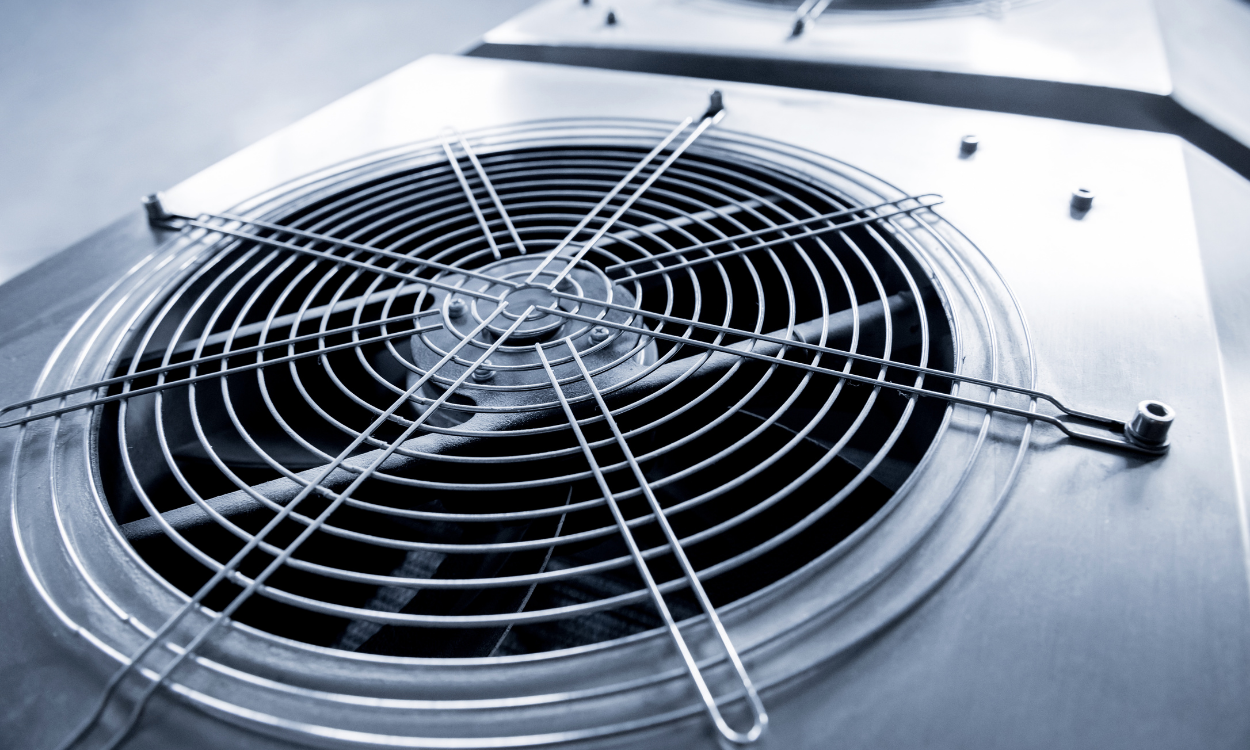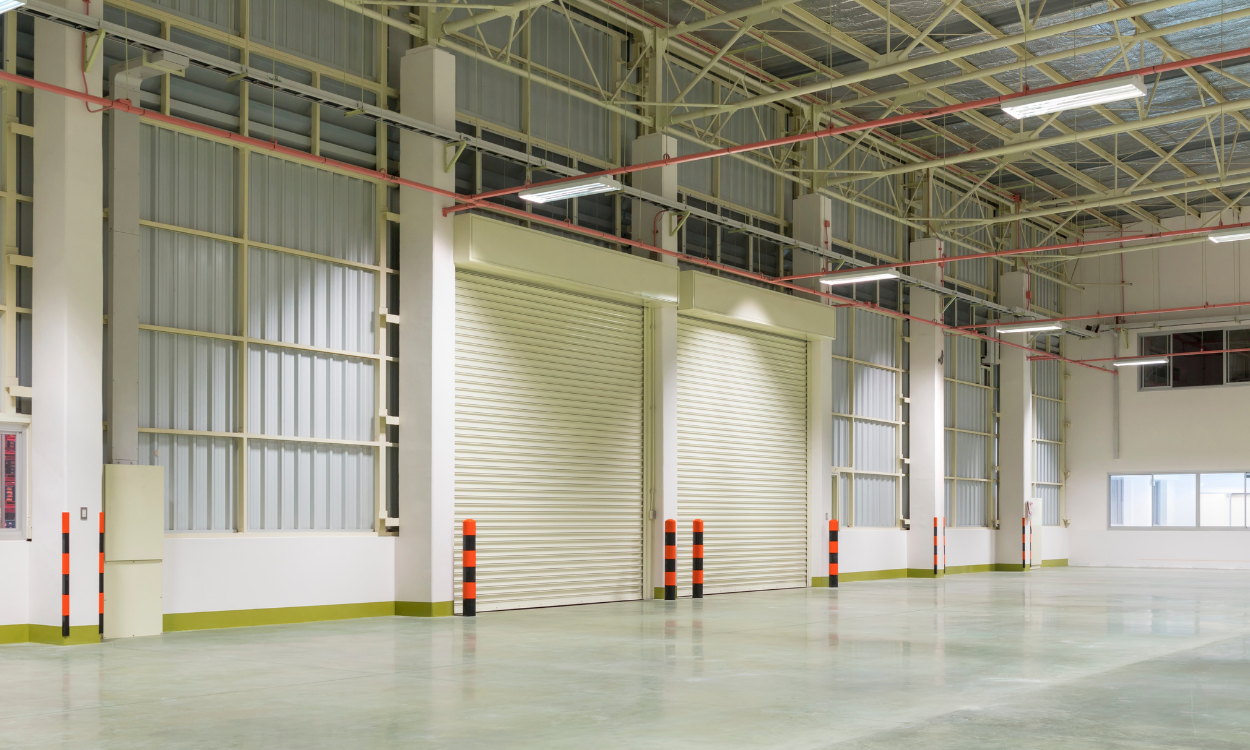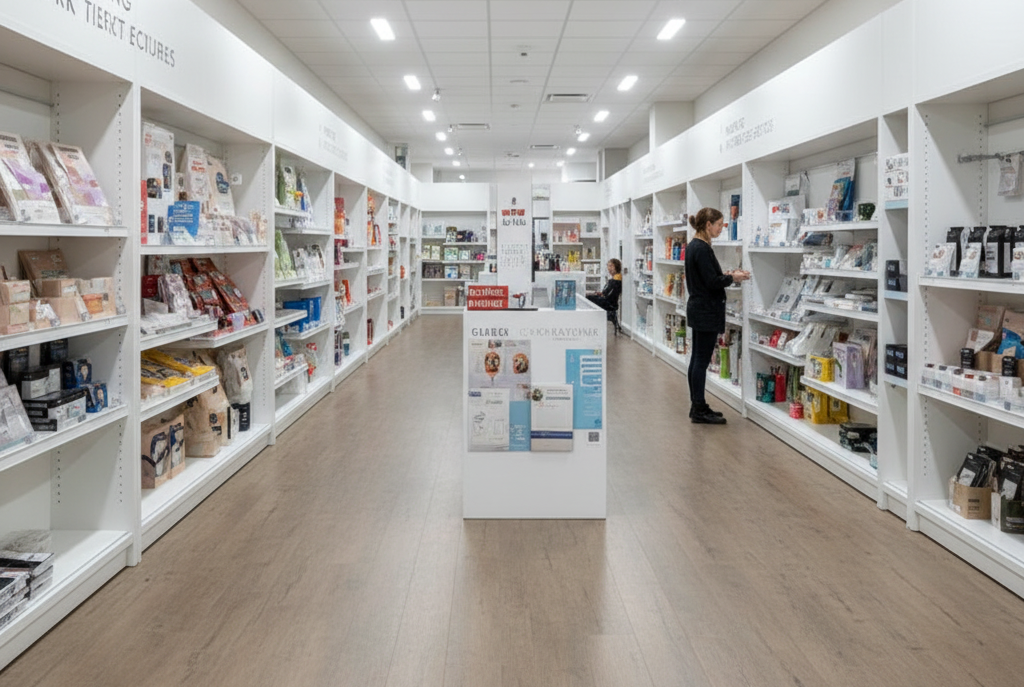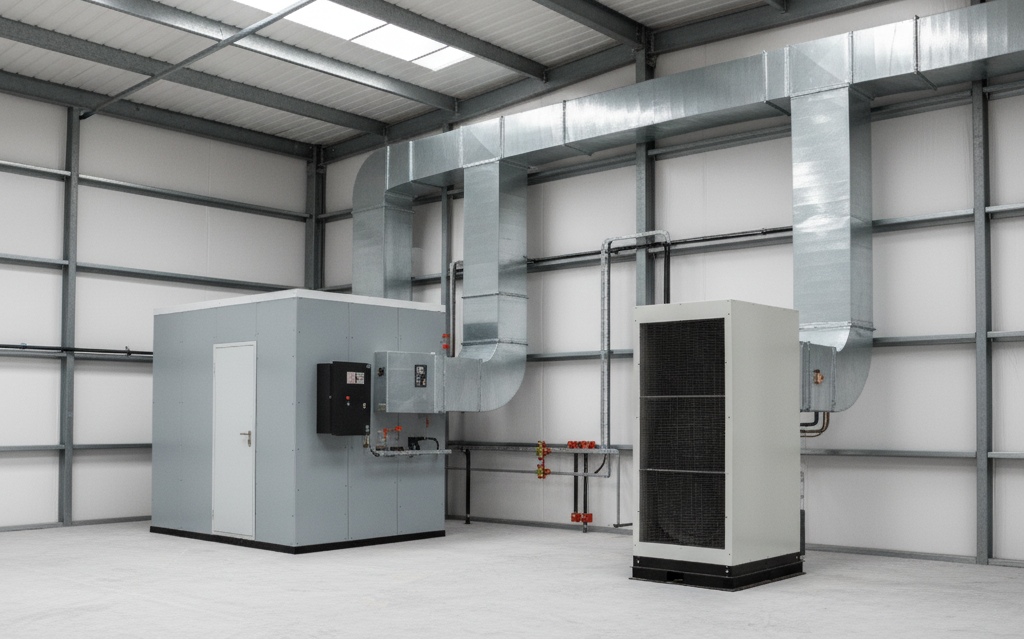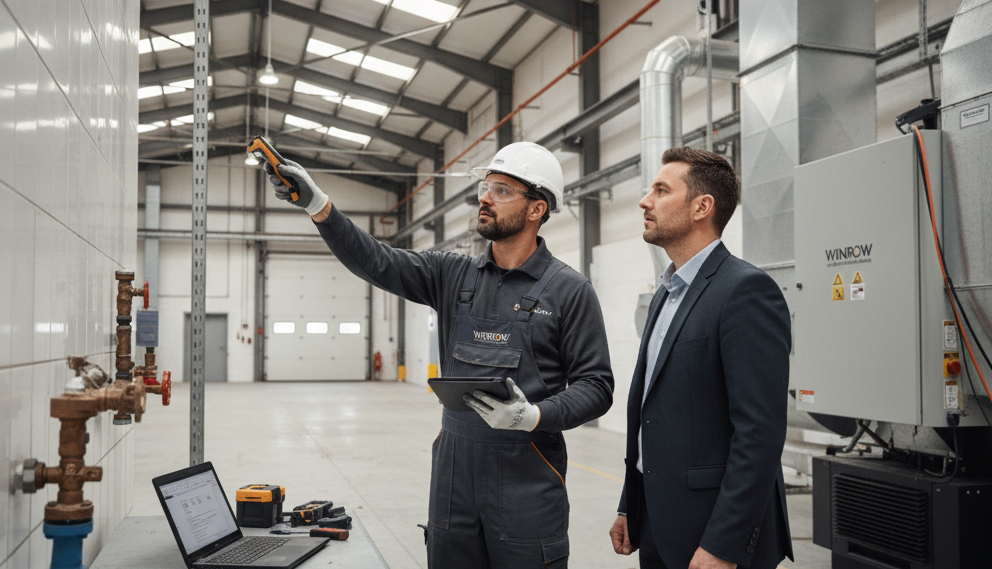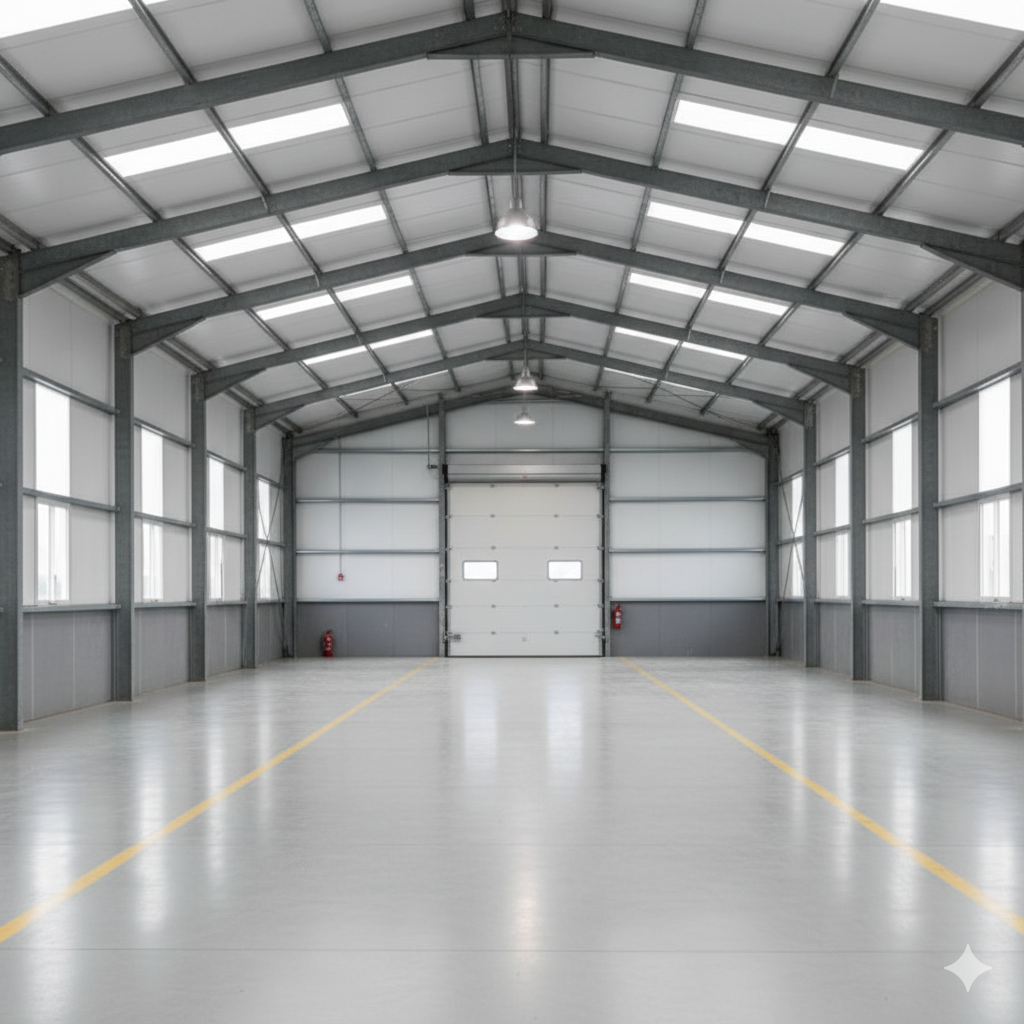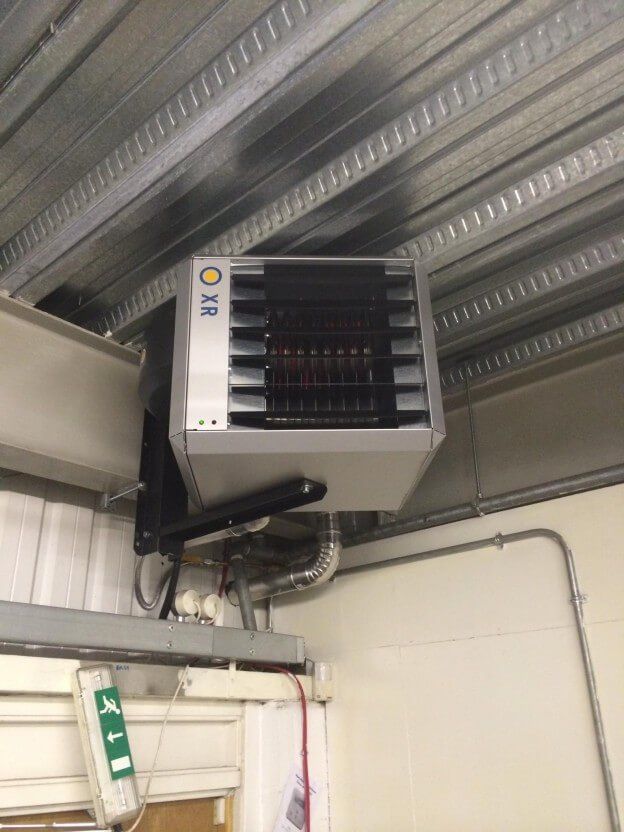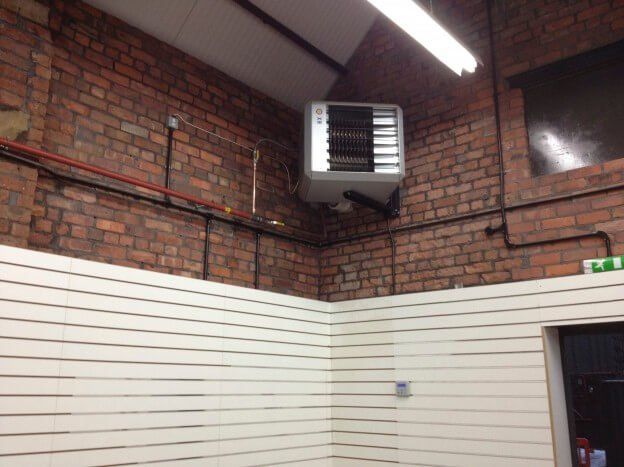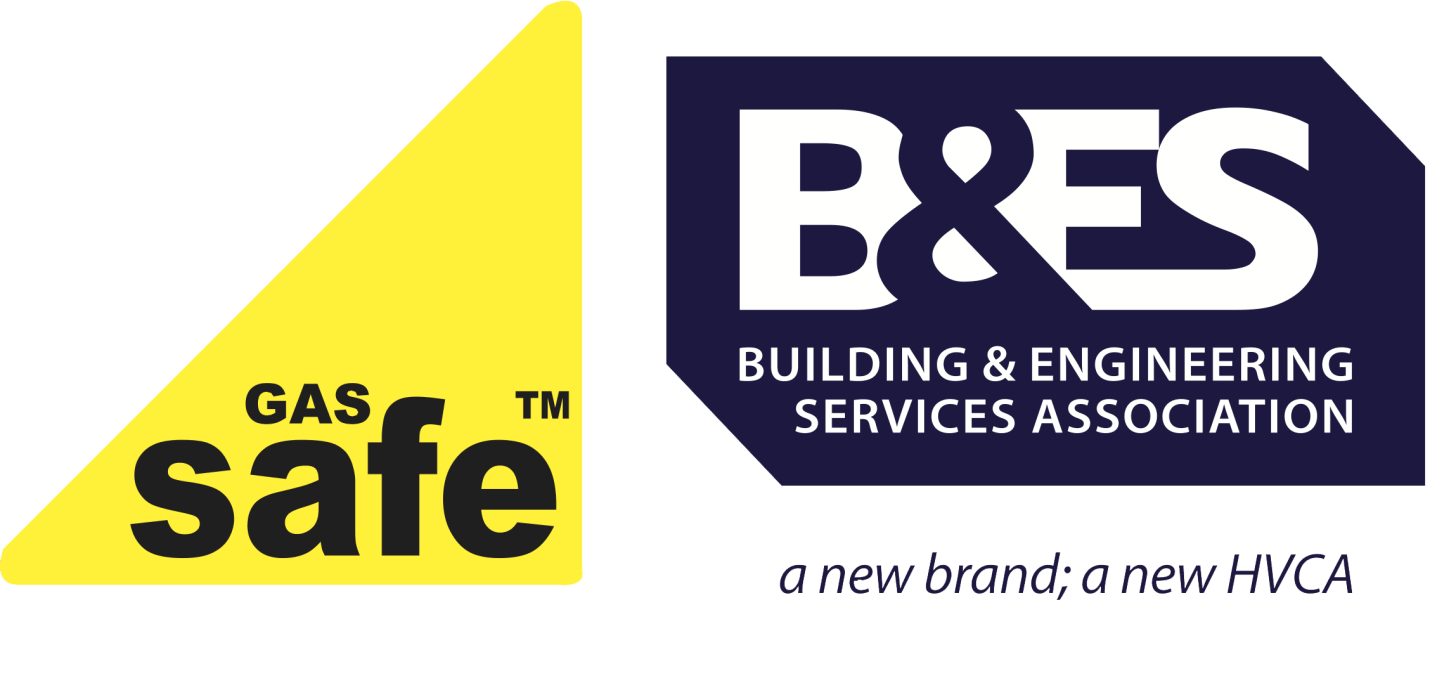Enhancing Workplace Comfort With Radiant Heating Solutions
Radiant heating solutions are a highly effective way to create a comfortable and healthy work environment, providing a consistent and gentle heat that enhances employee well-being and productivity. By minimising heat loss and optimising energy distribution,
radiant heating systems reduce energy consumption and costs. They also eliminate cold spots and drafts, promoting a comfortable and healthy workspace. Additionally, radiant heating solutions can be integrated with other building systems, such as HVAC and lighting, to create a holistic approach to climate control. As you explore the benefits of radiant heating, you'll discover how it can transform your workplace into a haven of comfort and productivity.
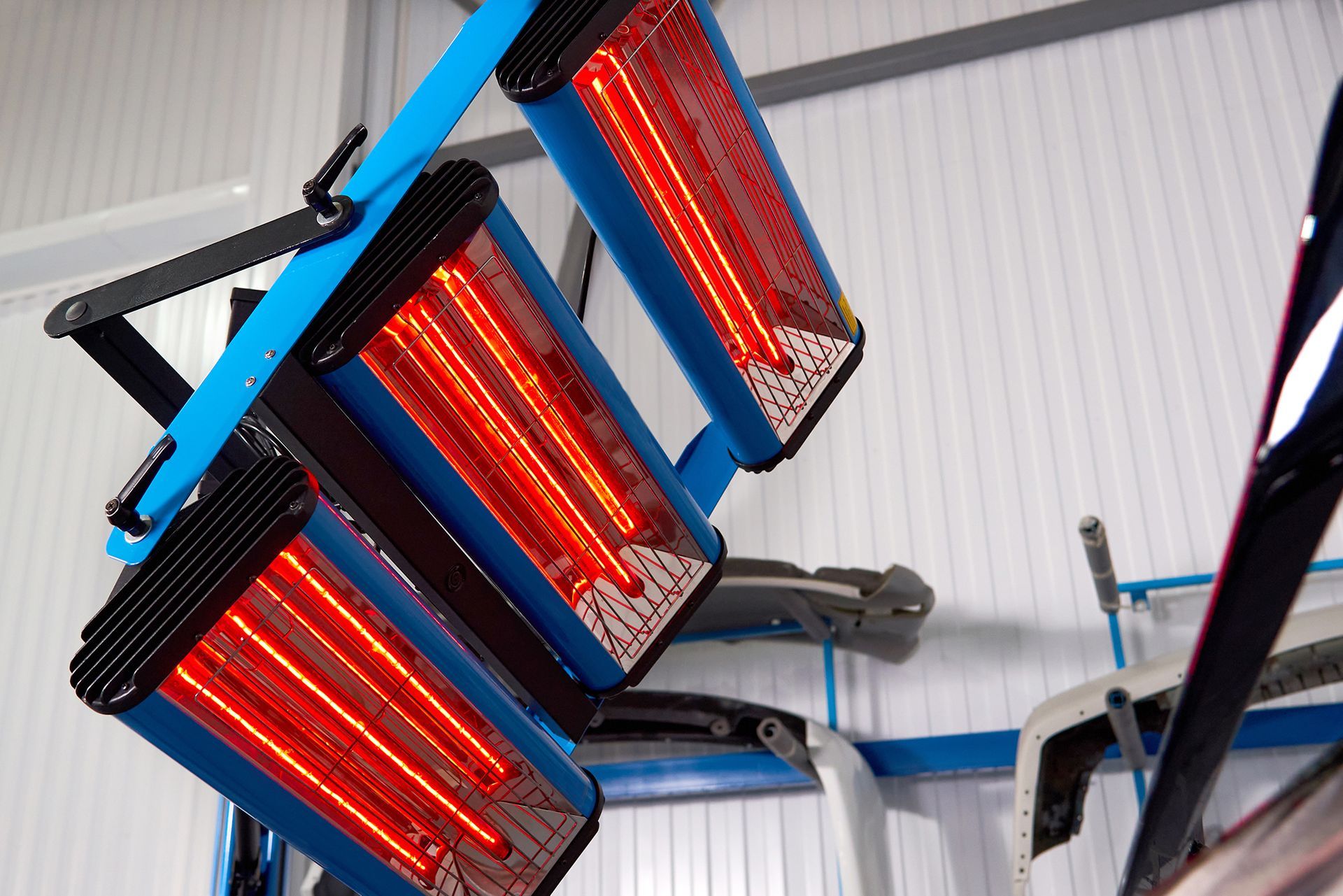
Benefits of Radiant Heating Systems
Radiant heating systems offer a multitude of advantages, including improved indoor air quality, increased energy efficiency, and enhanced comfort, making them an attractive alternative to traditional heating methods.
By circulating warm water through pipes beneath the floor, radiant heating systems provide a consistent and gentle heat that eliminates hot spots and drafts, creating a more comfortable environment for building occupants.
Additionally, these systems offer system flexibility, allowing for easy zoning and temperature control, which can be tailored to meet the specific needs of different areas within a building.
This flexibility also enables users to optimise energy consumption and reduce waste.
In addition, radiant heating systems prioritise user experience, providing a quiet, low-maintenance, and unobtrusive heating solution that does not disrupt daily activities.
With their numerous benefits, radiant heating systems are an ideal choice for those seeking to create a comfortable, efficient, and liberated workspace.
How Radiant Heating Works
As warm water flows through a network of carefully laid pipes, it quietly transfers heat to the surrounding space, providing a consistent and efficient means of warming a building.
This process is known as radiant heating, where heat is distributed through a hydronic system, leveraging the principles of heat transfer to create a comfortable indoor environment.
The pipe layout is essential in this process, as it determines the even distribution of heat throughout the space. The pipes, typically made of PEX or copper, are strategically placed to maximise heat transfer, ensuring that every corner of the room receives a sufficient amount of warmth.
As the heated water flows through the pipes, it releases its energy to the surrounding air and surfaces, creating a comfortable and consistent temperature.
This efficient heat transfer mechanism allows radiant heating systems to provide superior comfort and energy savings, making them an attractive solution for workplace comfort.
Improving Indoor Air Quality
When it comes to improving indoor air quality, radiant heating solutions can play a vital role.
By incorporating air purification systems, moisture control methods, and ventilation strategies, homeowners can substantially reduce indoor pollutants and allergens, creating a healthier living environment.
These measures not only enhance air quality but also contribute to a more comfortable and sustainable indoor space.
Air Purification Systems
Incorporating air purification systems into a radiant heating setup can substantially enhance indoor air quality by removing impurities and allergens from the air.
This integration is essential in maintaining a healthy and comfortable work environment. By removing pollutants and particles, air purification systems guarantee that the air is fresh and clean, promoting a sense of well-being among employees.
Fresh air is essential for productivity and focus, and air purification systems certify that the air is free from contaminants that can hinder performance.
Additionally, these systems can alleviate respiratory issues and allergies, creating a more inclusive and comfortable workspace.
Air quality is a critical aspect of indoor comfort, and air purification systems play a key role in maintaining peak air quality.
By combining radiant heating with air purification, businesses can create a holistic approach to indoor comfort, prioritising the health and well-being of their employees.
This synergy can lead to increased job satisfaction, reduced absenteeism, and improved overall performance.
Moisture Control Methods
Effective moisture control methods are vital to preventing the growth of mold and mildew, which can substantially compromise indoor air quality and undermine the benefits of air purification systems.
By implementing these methods, workplaces can provide a healthier and more comfortable environment for employees.
Some essential strategies for moisture control include:
- Installing humidity sensors to monitor and regulate humidity levels
- Conducting dampness mapping to identify areas prone to moisture accumulation
- Implementing a regular cleaning and maintenance schedule to eliminate standing water and moisture sources
- Guaranteeing proper drainage and water-resistant materials in construction and renovation projects
Ventilation Strategies
Proper ventilation strategies play a critical role in improving indoor air quality by reducing the concentration of airborne pollutants and moisture.
Effective ventilation is essential to create a comfortable and healthy work environment.
One approach is to incorporate natural ventilation strategies, which utilise outdoor air to ventilate the space. This can be achieved through the installation of windows, skylights, and solar chimneys that allow for air exchange and reduce the need for mechanical ventilation systems.
Another strategy is to implement air exchange systems that bring in fresh outdoor air and remove stale air. This can be done through heat recovery ventilation systems, which recover heat energy from the exhaust air and transfer it to the fresh air entering the building.
By incorporating these ventilation strategies, workplaces can improve indoor air quality, reduce the risk of airborne pollutants, and create a healthier and more productive work environment.
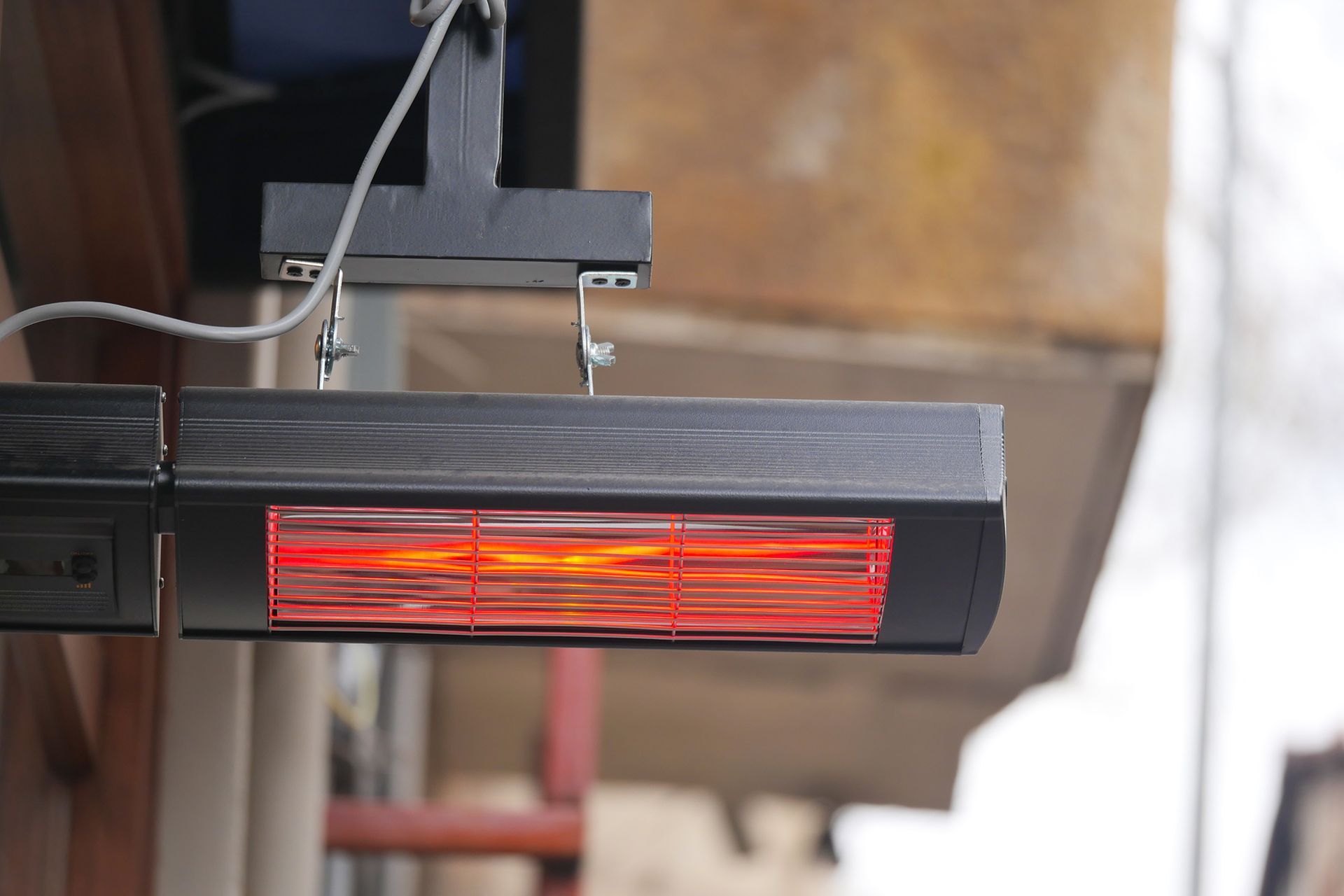
Increased Energy Efficiency Gains
One of the most significant advantages of radiant heating solutions is that they can achieve increased energy efficiency gains by minimising heat loss through walls, floors, and ceilings.
This is particularly important for organisations seeking to reduce their carbon footprint and promote a more sustainable work environment.
By reducing heat loss, radiant heating solutions can help decrease energy consumption, leading to lower energy bills and a smaller environmental impact.
Some of the ways radiant heating solutions can increase energy efficiency gains include:
- Conducting energy audits to identify areas of heat loss and opportunities for improvement
- Optimising system design and installation to minimise heat loss and maximise efficiency
- Using advanced materials and technologies to reduce heat loss and improve insulation
Integrating with other building systems, such as ventilation and cooling systems, to create a more holistic and efficient approach to climate control.
Reduced Noise Pollution Levels
In addition to minimising energy waste, radiant heating solutions also offer a quieter alternative to traditional HVAC systems, substantially reducing noise pollution levels in the workplace.
This is particularly important in offices where a peaceful environment is essential for productivity and focus. Radiant heating systems operate at a lower decibel level than traditional HVAC systems, which can be a major distraction and disrupt acoustic comfort.
By reducing noise pollution, radiant heating solutions enable employees to work in a more serene environment, promoting better concentration and overall well-being. This is especially vital in open-plan offices where soundscaping is key.
By minimising background noise, radiant heating solutions create an environment that is conducive to collaboration, creativity, and innovation. With reduced noise pollution levels, employees can work more efficiently, leading to increased job satisfaction and better overall performance.
Eliminating Cold Spots Completely
Radiant heating solutions provide consistent and uniform heat distribution, effectively eliminating cold spots that can negatively impact employee comfort and productivity. This is achieved through advanced technologies such as zone mapping and thermal profiling, which enable precise control over heat output and distribution.
By eliminating cold spots, radiant heating solutions create a comfortable and consistent work environment, allowing employees to focus on their tasks without distractions. This, in turn, leads to increased productivity and job satisfaction.
Some key benefits of eliminating cold spots with radiant heating solutions include:
- Improved air quality by reducing the need for individual space heaters
- Enhanced employee comfort and well-being
- Increased energy efficiency and cost savings
- Flexibility to adapt to changing workspaces and layouts
- Creating a Healthier Work Environment
Up to 87% of employees report improved overall health and well-being when working in an environment with ideal temperature and humidity levels, which radiant heating solutions can provide.
This is essential in creating a healthier work environment, where employees can thrive and reach their full potential.
Radiant heating solutions can help eliminate cold spots and drafts, reducing the risk of musculoskeletal disorders and promoting comfort.
Additionally, ergonomic workstations can be optimised with radiant heating, allowing employees to work in a comfortable and healthy posture.
Wellness programs can also be integrated with radiant heating solutions, providing a holistic approach to employee well-being.
By combining these elements, employers can create a workspace that supports the physical and mental health of their employees.
This, in turn, can lead to increased job satisfaction, reduced absenteeism, and improved overall performance.
Boosting Employee Productivity Rates
Ideal temperature and humidity levels, achieved through radiant heating solutions, can substantially enhance employee focus and concentration, leading to increased productivity and efficiency. When employees are comfortable, they are more likely to be motivated and engaged, ultimately leading to better work outcomes.
A well-regulated work environment can have a significant impact on task prioritisation and overall work life.
Improved time management: When employees are comfortable, they can better allocate their time and prioritise tasks, leading to increased productivity and efficiency.
Enhanced collaboration: A comfortable work environment fosters a sense of community and teamwork, encouraging employees to work together to achieve common goals.
Reduced distractions: By eliminating temperature-related distractions, employees can focus on their tasks, leading to higher quality work and reduced errors.
Increased job satisfaction: A comfortable work environment can lead to increased job satisfaction, reducing turnover rates and improving overall work life.
Enhancing Overall Workplace Ambiance
Three essential elements of a well-designed workplace ambiance - aesthetics, acoustics, and thermals - can be substantially enhanced with radiant heating solutions, fostering a more inviting and comfortable environment for employees.
Aesthetic appeal is notably improved as radiant heating systems are discreetly installed, eliminating the need for unsightly radiators or ductwork. This allows for a more open and airy feel, which can be further enhanced through thoughtful lighting design.
Well-designed lighting can create a sense of warmth and comfort, making employees feel more at ease and focused. Additionally, radiant heating solutions can be integrated with natural lighting to create a harmonious and uplifting atmosphere.
Radiant Heating System Design
A well-planned radiant heating system design is essential to achieving peak performance, energy efficiency, and cost-effectiveness in a commercial setting.
A successful design ensures that the system integrates seamlessly with existing infrastructure, optimising its overall performance. This is where system integration comes into play, allowing the radiant heating system to work in harmony with other building systems, such as HVAC and lighting.
To achieve design flexibility, it's crucial to consider the following factors:
Space constraints: Designing the system around existing architectural features and spatial limitations.
Heat output requirements: Calculating the necessary heat output to maintain a comfortable temperature in each zone.
Pipe layout and routing: Strategically planning pipe routes to minimise installation costs and maximise efficiency.
Material selection: Choosing materials that meet specific building codes, regulations, and sustainability goals.
Installation and Maintenance Tips
With a well-designed radiant heating system in place, the next step is to secure a successful installation and maintenance routine to guarantee peak performance and longevity.
This involves thorough site preparation, making certain the area is clear of debris and obstructions. Proper pipe insulation is also vital to prevent heat loss and optimise energy efficiency. Insulation materials should be selected based on the specific radiant heating system and environmental conditions.
During installation, it is essential to follow the manufacturer's guidelines and industry standards to facilitate a seamless integration of the system.
Regular maintenance checks should be scheduled to identify and address any potential issues before they escalate. This includes inspecting pipes for signs of damage or corrosion, checking the system's pressure and temperature, and performing routine cleaning to prevent clogs.
Cost-Effective Heating Solution
When it comes to cost-effective heating solutions, radiant heating systems stand out as a superior option.
By reducing energy waste and optimising heat distribution, these systems can lead to significant savings on operational expenditures.
In the following section, we will explore the key benefits of radiant heating, including lower operational expenditure, energy efficiency gains, and reduced heating costs.
Lower Operational Expenditure
By minimising energy losses and optimising heat distribution, radiant heating systems provide a cost-effective solution for reducing operational expenditures. This is particularly important for businesses operating under budget constraints, where cost savings can have a significant impact on the bottom line.
Some key benefits of radiant heating systems with regard to lower operational expenditure include:
Reduced energy consumption: Radiant heating systems can reduce energy consumption by up to 30%, resulting in significant cost savings over time.
Longer system lifespan: With fewer moving parts and less wear and tear, radiant heating systems can last up to 20 years or more, reducing maintenance and replacement costs.
Zone control: Radiant heating systems allow for zone control, enabling businesses to heat only the areas that need it, reducing energy waste and costs.
Low maintenance: Radiant heating systems require minimal maintenance, further reducing operational expenditures.
Energy Efficiency Gains
Radiant heating systems harness significant energy efficiency gains, providing a cost-effective heating solution that addresses the environmental and economic concerns of modern businesses.
By reducing energy consumption, these systems minimise the carbon footprint of commercial buildings, promoting a more sustainable future.
System optimisation is key to achieving maximum energy efficiency, as it enables businesses to fine-tune their heating systems to meet specific needs.
This can be particularly beneficial during building renovations, where radiant heating systems can be seamlessly integrated into existing infrastructure. By doing so, businesses can reap the benefits of energy-efficient heating while minimising disruption to operations.
Additionally, radiant heating systems can be designed to work in tandem with other energy-efficient technologies, such as solar panels and insulation, to create a highly efficient and sustainable heating solution.
As a result, businesses can enjoy significant energy efficiency gains, reducing their environmental impact while also benefiting from cost savings.
Reduced Heating Costs
Businesses that adopt radiant heating solutions can significantly reduce their heating costs, as these systems operate at a lower temperature than traditional heating methods, resulting in substantial energy savings. This cost-effective approach can lead to significant financial benefits, making it an attractive option for companies looking to optimise their energy expenditure.
Some key advantages of radiant heating solutions include:
Lower operational temperatures: Radiant heating systems operate at lower temperatures than traditional heating methods, resulting in reduced energy consumption and lower heating costs.
Increased energy efficiency: Radiant heating solutions can achieve higher energy efficiency rates than traditional heating systems, leading to further energy savings.
Reduced heat loss: Radiant heating systems minimise heat loss, as they warm objects and people directly, rather than heating the air.
Accurate cost analysis: By implementing radiant heating solutions, businesses can conduct a more accurate cost analysis, identifying areas of inefficiency and opportunities for improvement.
Future of Workplace Heating Solutions
As workplaces evolve to prioritise employee comfort, productivity, and sustainability, the future of heating solutions is likely to be shaped by innovative technologies and design approaches.
The integration of smart office technology will play a significant role in creating ideal heating environments. For instance, advanced sensors and AI-powered systems can detect occupancy and adjust temperature settings accordingly, reducing energy waste and promoting sustainable futures.
Additionally, radiant heating solutions will become even more prevalent, offering efficient and comfortable heating options that can be tailored to individual spaces.
In the future, we can expect to see a rise in net-zero energy buildings, where heating systems are designed to work in harmony with renewable energy sources.
This shift towards sustainable futures will not only benefit the environment but also provide significant cost savings for businesses.
As the workplace continues to evolve, it's essential for heating solutions to adapt and prioritise the well-being of employees while minimising their ecological footprint.
Share This Post.
Need a Quote?
Is your business is looking for heating upgrade or an installation quote? Please call us on 08000 588 035 for a free quotation or fill out our contact form and we’ll get back to you as soon as we can.
If you could also attach some relevant images of the building and advise the building volumetric, it will help with our initial design assessment. Thank you.
